The chapter begins with the question, What is Math Workshop?
Laney Sammons writes on page 185 “In general, Math Workshop is
designed to build on each student’s strengths and needs”. During math workshop students are able to
work collaboratively to “encounter tasks that not only encourage the development
of conceptual understanding, but also the work habits that will lead to their
future success.” During this time the
teacher can work in small groups with other students.
Followed by Challenges of Math Workshop
It takes time to plan and implement math workshop. In my opinion, my workshop should be planned
the same way you would you reading workshop.
All procedures and routines should be practiced and model prior to full
implementations.
The chapter now focuses on nine best tasks for Math Workshop.
See figure 6.1 on pages 188-189 for a chart
of math workshop components. All math workshop
components should have been taught and modeled so the students can work
independently.
- Review previously mastered concepts-- allows students to maintain what they have previously learned. Basically children are review skills that have already been taught. Before you add anything to your math workshops model what is expected and practiced.
- Practice for math fact automaticity—students work in pairs to practice math facts using flash cards, games, computers, etc… There are a variety of items for purchase or free for your students to use. I use flashcards cards from Dollar Tree or Target Dollar spot. I store them in recycled lunch meat containers. This is the first thing the students work on in math workshop.
- Use mathematical games to reinforce concepts—Students should have been taught to play the game before it enters math workshop. The games you choose from math workshop should match your curriculum.
- Practice problem solving— The author discuss using problem of the day or problem of the week at this work station. She gives suggestions on how to pick out your problem so that it is appropriate for the students. She also discusses how to model this before you have students work independently.
- Investigate mathematical concepts—Students gather data to solve a problem. Examples that were discussed include election periods, purchasing materials, plant growth, comparing planes. Teachers are challenged to find investigations that peek the student’s interest.
- Write in math journals— On page 196 Sammons writes “Math Journals may be used by students to record mathematic observations, to record the meanings of mathematics vocabulary words, to write about conjectures they have made, to log steps they used in problem solving, and to write about their understanding of mathematical concepts.” On page 26 Sammons gives a list of seven suggestions for questions you can ask in math journals.
- Complete computer-related work—Students use computers programs and online programs to practice math skills. Last year for part of my morning routine students rotated through X-tra Math for math fact practice. During Math Workshop students also had a scheduled time for the computer when they were able to practice math skills with the Education City program. My school has a site license to run this program.
- Complete math-related work from other subject areas---Math is practiced in other subject areas. On page 199 Sammons writes “Not only do students begin to comprehend the function of mathematics in their world, but, this practice gives the teacher additional time for instruction in other content areas.” This is an area that I will need to improve upon this year.
- Complete work from small-group instruction—This is the student’s opportunity for written practice. This is a scaffolding approach for student support.
Many of the lessons have activities that are taught in whole group and practiced during math workshop. This includes instructions and resources to make your own activities to add to the workshop. I have purchased items and made my own items for my Math Workshop.
I keep my math stations is storage boxes like this. I have four children working in one box, which is two pairs. I model with students how I want them to sit and we practice this at the beginning of the year. I basically have the students pair up and sit with the box between them. Last year I changed partners every nine weeks.
I set my boxes up with the Math Workstations model by Debbie Diller. When the students retrieved the math boxes from the shelf they practiced math flash cards before moving onto the activities in the box. I included Math Investigations from my math series as well as other games.
I am thrilled to be co-hosting Chapter 6 of Guided Math with Amanda from Reaching for the Top!
Be sure to check out the calendar. We only have two weeks left of the book study. However, you can go back and catch up on all the blogs if you missed anything.
All of this was organized by Brenda from Primary Inspired.

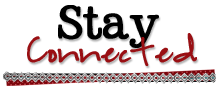






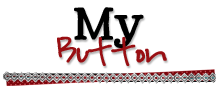


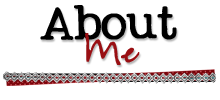


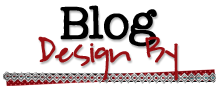












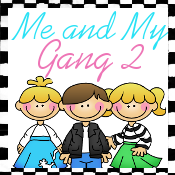

Thank you for sharing the online website to practice math facts. Currently, our school uses FASTT MATH, which I adore, but you never know if they will renew the program. Now I have a back up. :)
ReplyDeleteCheck out my post. I would love feedback.
Patti
One Class, One Sound
Awesome summary. I think I need to get my hands on Math Work Stations. We are sort of in between curriculum. A mix of enVision and Growing with Math. Thanks again.
ReplyDeleteAlyce
Mrs. Bartel’s School Family
Thank you for hosting Chapter 6! I'll be back later to see what other people have to say about this chapter.
ReplyDeleteStorie
Stories by Storie
Thanks again for getting the link exchange going! Don't you love xtra math? So glad I found that site and was able to use it this year. I too do a lot of modeling with how students are to sit and work with a mathstation. Makes such a difference! We should discuss math stations we do and swap ideas! I'd love to chat with you about them since we're both in second grade! :) Great post co-host! :)
ReplyDeleteAmanda
Reaching for the TOP!
We did this school wide last year in our professional learning communities. Learned a lot of great tips!
ReplyDeleteI miss teaching math!! I've been departmentalized since I moved up, and I miss teaching math to my second graders. I'm a new follower. Thanks for visiting my blog!
ReplyDeleteMegan
I Teach. What's Your Super Power?
Thank you for sharing! We are starting the 2012 version of math investigations this year and I was wondering how it would lend itself to my Guided Math program. We had taught investigations in years past so many of my centers are investigation based. My first graders follow a free movement through a series of math activities and it works great. Following a large group mini lesson they have seat work to do, then a problem of the day, fact fluency on the computer, a math center (which reviews past skills) and then free choice from activity boxes. The kids follow a "road map" at their own pace so early finishers still have things to do and it helps motivate procrastinators. I love the conversations they have while working. Thanks again!!
ReplyDeleteThanks for sharing all of your detailed thoughts on guided math! I am planning to implement this in my classroom (first year teacher!!) and I am looking forward to it. I long-termed for a teacher who used it and I really believe in it. I'm new to blogging and am glad I found yours! I'm your newest follower! Check out my blog!
ReplyDelete2nd Grade Teacher
The Sweetest Thing